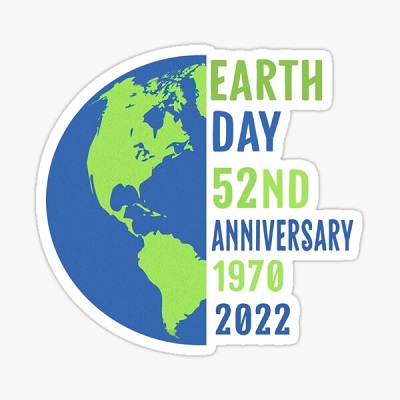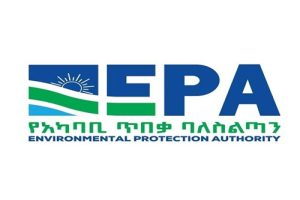
The 52nd Earth Day was celebrated on 22 April 2022 across the world with the theme “Invest in our planet” to promote all kinds of investments to protect the health of the world with the goal of building green and prosperous future. The earth.org website underlined that “we need to act boldly, innovate broadly, and implement equitably” to save the planet from further damages.
“Invest in our planet” promotes collective action from everyone, everything and every day in combating climate change, investing on green developments and minimizing negative investments that affects the health of the planet.
Ethiopia, among the world leaders in climate action and sustainable land management, has also celebrated the day by organizing a discussion forum with stakeholders. The central point of the discussion was environmental pollution and controlling methods in Ethiopia.
Ethiopia is investing its maximum efforts and capacities in protecting the environment, combating climate change with adaptation and mitigation measures. Ethiopia’s policies, strategies, actions and activities focus on building climate resilient green economy, poverty reduction through increasing agricultural productivity and sustainable use of land.
Ethiopian population resides in the rural parts of the country dominantly agrarian society with small holder agricultural farming. Hence, Ethiopia’s economic attention focuses on transforming the agriculture sector to increase agricultural production by caring for the environment, conserving nature and properly managing the available land.
To protect its natural resources and to conserve and protect the environment, annually, Ethiopia mobilizes tens of millions to invest on water and soil conservation mechanisms across the country with two months of free public service. In 2022 water and soil conservation campaign, Ethiopia covers over 2.5 million hectares of land by different conservation and protection methods.
Similarly, during the rainy season every year, Ethiopia develops the culture of seedling plantation in all corners by mobilizing all capable people. This culture now becomes a huge national project after Prime Minister Abiy Ahmed came to power. The 2019-launched National Green Legacy Initiative helps the country to secure over 17 billion seedlings within three years.
These annual initiatives have multidimensional benefits. It helps the country in environmental protection, to increase its agricultural production by conserving the environment and to combat climate change. On the other hand, by increasing the forest coverage of the country, it helps the country to get additional rain, to combat desertification and drought.
Parallel to these investments and initiatives, Ethiopia gives due attention for sustainable land management that aims both to develop the household productivity of the agrarian society, majority of its population, and to use the natural resources and the land properly and manageably. To modernize the land management and to develop sustainable land management system, Ethiopia applied and initiated different policies and strategies so far and these efforts are scoring positive outcomes in building sustainable land management.
In 2019, the World Bank stated Ethiopia a country “among the world leaders in Sustainable Land Management (SLM) and climate action.” The World Bank added that though Ethiopia invests its maximum capacities in sustainable land management, land degradation still affects about one in five people in the country. This affects the productivity of the small holder agriculture sector significantly which affects the rural growth and poverty reduction efforts of the country.
According to the 2019’s WB information, Ethiopia’s economy is highly climate sensitive and the century’s adaptive capacity is so far was low. This makes the country among the most vulnerable to climate change countries of the world. To combat this vulnerability to climate change and its devastating impacts, Ethiopia’s responses to climate change and conserving the environment are multidimensional which makes the country among the leading global countries in giving due attention for nature.
These multidimensional efforts of Ethiopia include investing on sustainable land management to combat the rural poverty by transforming the agriculture sector and increasing its productivity. WB underlined that “intersection of land management, rights, and use is a key development issue for millions of rural Ethiopians facing water, food, land tenure, and livelihood insecurities.”
Appreciating Ethiopia’s positive achievements and results in addressing land degradation using its internal capacity, WB urges further interventions and supports for transformative and lasting scale up of sustainable land management interventions in Ethiopia. Strengthening national, regional and local institutions would help to increase the country’s internal efforts in advancing and developing its sustainable land management system and maintain restored landscapes over the long term.
Ethiopia applied issuance of holding certificates to farmers’ as incentives to restore watersheds a functioning, modern rural land administration system and national database is needed to ensure the security of land tenure. By enhancing the issuance of holding certificates that restored by the farmers themselves as incentive, according to Ethiopian Ministry of Agriculture over 400 thousand hectares of land becomes free from animal contact that was seriously affected with over grazing.
The farmers who invest in restoring and conserving an affected area got holding certificates to use it for income generation from green investments. This new mechanisms initiates the people to conserve their surroundings and increase their environmental protection. The issuance of holding certificate promotes the people to use the land properly and develops green development which has a huge positive impact in protecting the ecology and biodiversity of the ecosystems.
To support these Ethiopia’s initiatives and to address the limitations, the WB in 2019 applied the Climate Action through Landscape Management (CALM) Program approved to finance Ethiopia’s sustainable land management initiatives. CALM was an initiative to deliver action on climate change through payments for results in participatory watershed management, and rural land administration and consolidating gains through institutional reform, WB noted. This aims to help Ethiopia to meet its climate resilience and mitigation goals and to sustainably manage its natural resources.
The CALM, a five years results-based financing by WB to the Government of Ethiopia that aims to increase the adoption of sustainable land management practices and to expand access to secure land tenure in rural areas of Ethiopia is bringing positive outcomes in recovering affected areas and conserving the natural ecology and ecosystems. The program was initiated to reach 280 woredas in functioning modern land registry and to build up to five thousand watersheds of the Ethiopian highlands as well as up to eight million landholding certificates.
The implementation of the sustainable land management system of Ethiopia is now playing crucial role in reducing land degradation through recovery and conservation projects. In addition the SLM program in Ethiopia is contributing in improving the livelihoods of the rural population by making the agriculture resilient to climate change. The performance based issuance of holding certificate to the society is bringing sustainable outcomes both in changing the livelihoods of the rural population and in sustainable recovery of the degraded mountainous areas.
This sustainable land management system shows significant positive outcomes in basin development and recovery of degraded mountainous areas.
BY DARGIE KAHSAY
The Ethiopian Herald 26 April 2022




